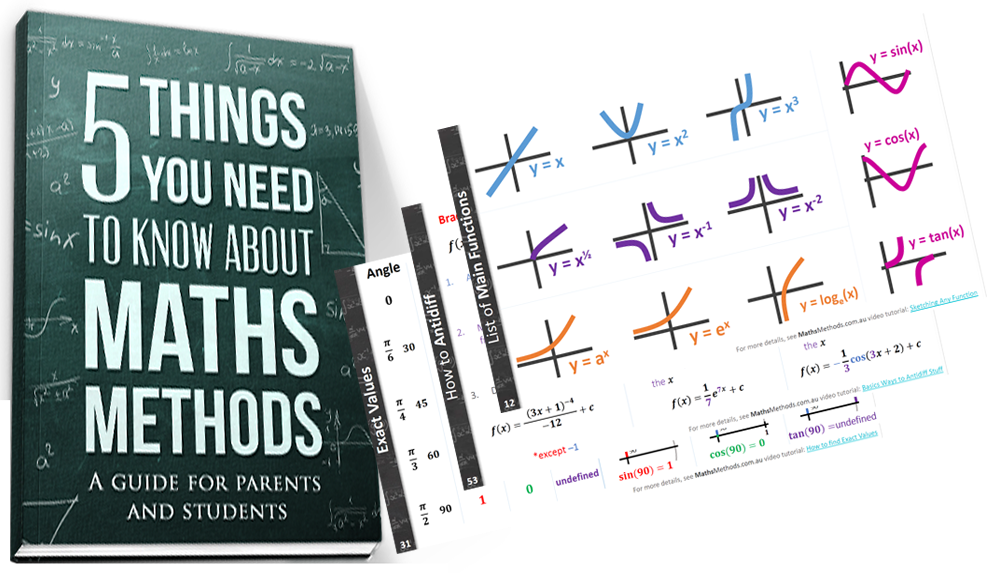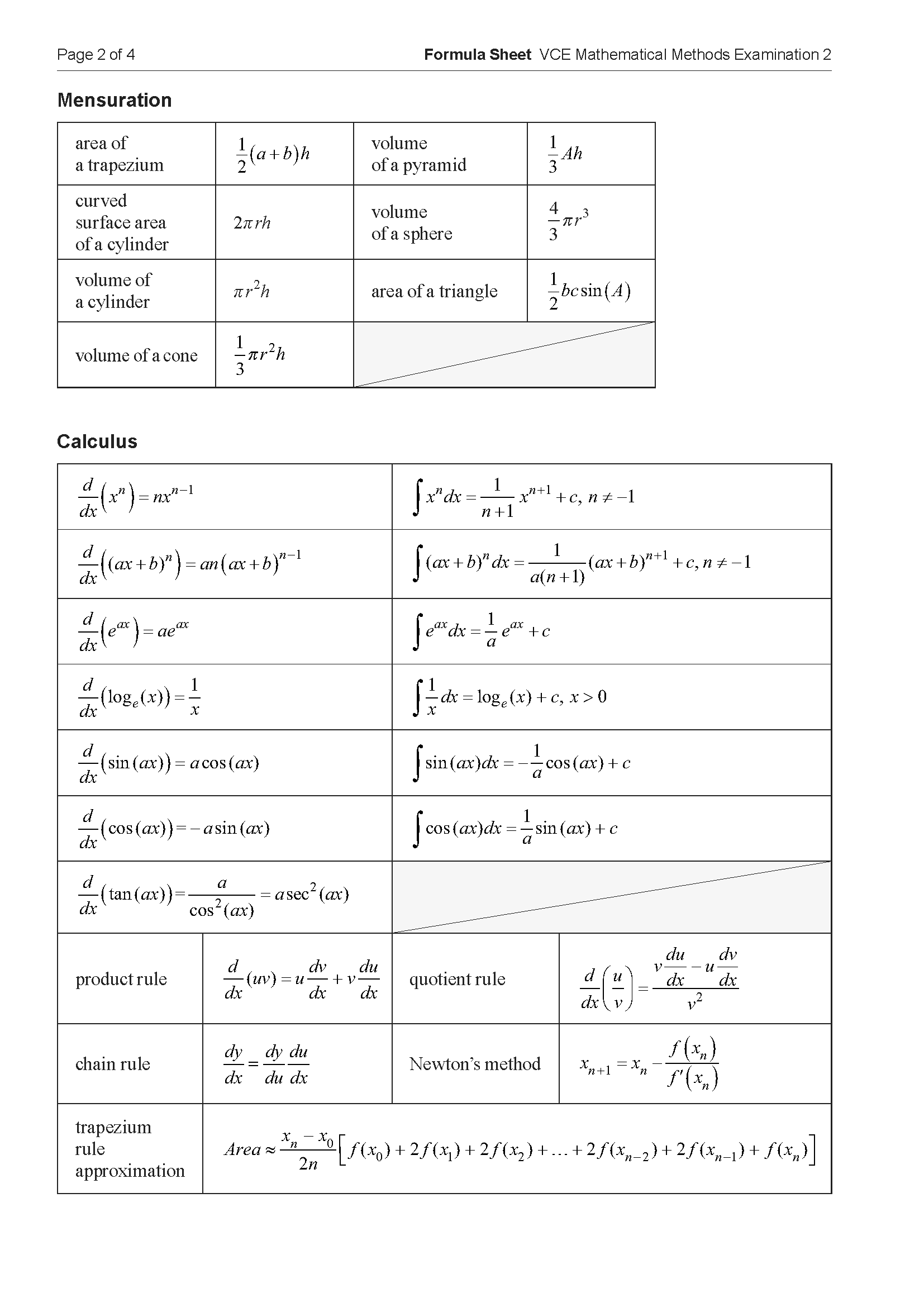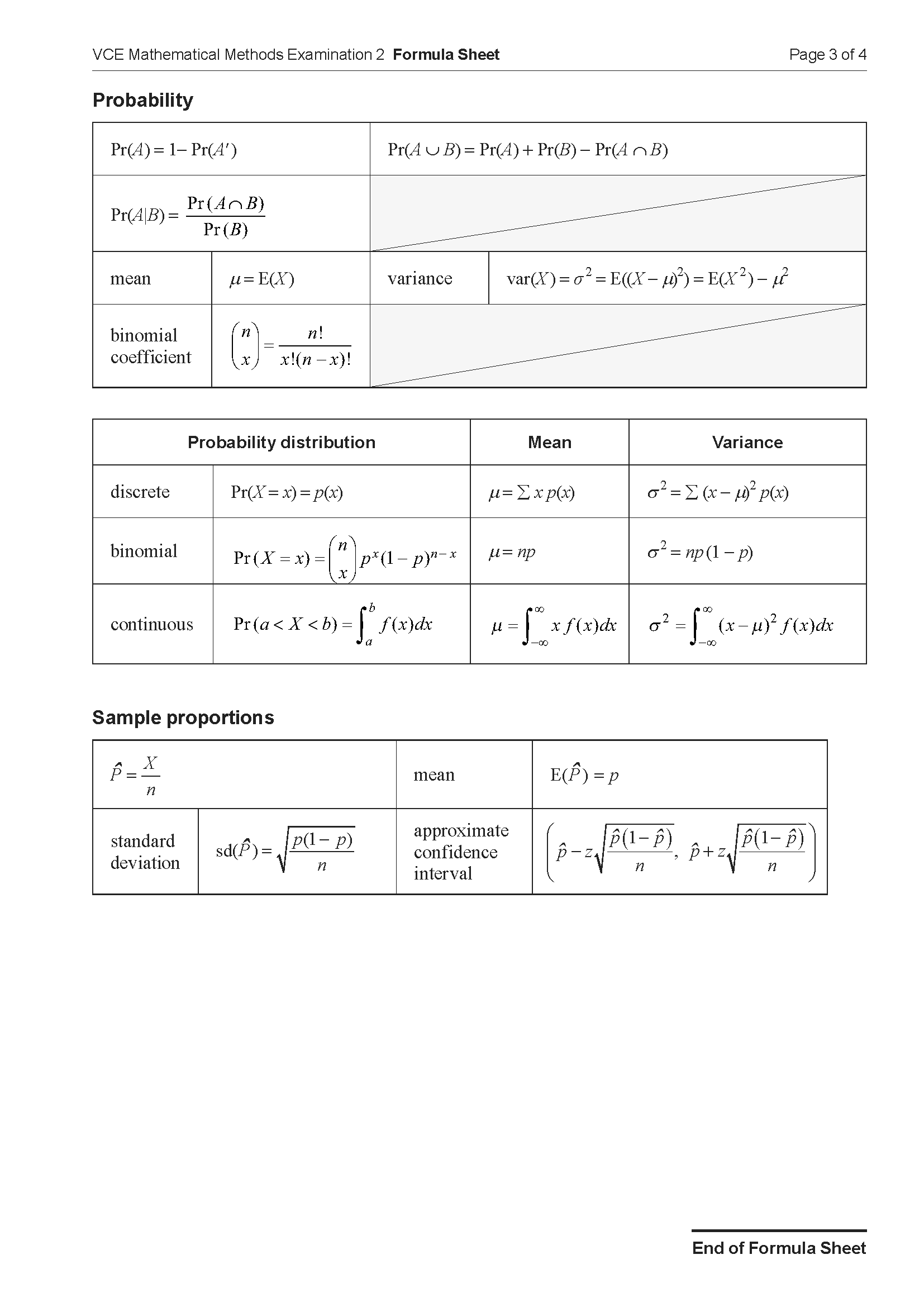VCE Maths Methods Continuous Probability Mini Test 2
Number of marks: 9
Reading time: 2 minutes
Writing time: 13 minutes
Section A – Calculator Allowed
Instructions
• Answer all questions in pencil on your Multiple-Choice Answer Sheet.
• Choose the response that is correct for the question.
• A correct answer scores 1; an incorrect answer scores 0.
• Marks will not be deducted for incorrect answers.
• No marks will be given if more than one answer is completed for any question.
• Unless otherwise indicated, the diagrams in this book are not drawn to scale.
A probability density function, \(f\), is given by
\( f(x) = \begin{cases} \frac{1}{12}(8x-x^3) & 0 \le x \le 2 \\ 0 & \text{elsewhere} \end{cases} \)The median, \(m\), of this function satisfies the equation
- A. \(-m^4 + 16m^2 - 6 = 0\)
- B. \(-m^4 + 4m^2 - 6 = 0\)
- C. \(m^4 - 16m^2 = 0\)
- D. \(m^4 - 16m^2 + 24 = 0.5\)
- E. \(m^4 - 16m^2 + 24 = 0\)
A probability density function \(f\) is given by
\( f(x) = \begin{cases} \cos(x)+1 & k < x < k+1 \\ 0 & \text{elsewhere} \end{cases} \)
where \(0 < k < 2\).The value of \(k\) is
- A. 1
- B. \(\frac{3\pi-1}{2}\)
- C. \(\pi-1\)
- D. \(\frac{\pi-1}{2}\)
- E. \(\frac{\pi}{2}\)
The continuous random variable, \(X\), has a probability density function given by
\(f(x) = \begin{cases} \frac{1}{4}\cos\left(\frac{x}{2}\right) & 3\pi \le x \le 5\pi \\ 0 & \text{elsewhere} \end{cases} \)
The value of \(a\) such that \(\Pr(X < a) = \frac{\sqrt{3}+2}{4}\) is- A. \(\frac{19\pi}{6}\)
- B. \(\frac{14\pi}{3}\)
- C. \(\frac{10\pi}{3}\)
- D. \(\frac{29\pi}{6}\)
- E. \(\frac{17\pi}{3}\)
End of Section A
Section B – No Calculator
Instructions
• Answer all questions in the spaces provided.
• Write your responses in English.
• In questions where a numerical answer is required, an exact value must be given unless otherwise specified.
• In questions where more than one mark is available, appropriate working must be shown.
• Unless otherwise indicated, the diagrams in this book are not drawn to scale.
The function \( h : [0, \infty) \rightarrow \mathbb{R},\ h(t) = \frac{3000}{t + 1} \) models the population of a town after \( t \) years.
a. Use the model \( h(t) \) to predict the population of the town after four years. 1 mark
b. A new function, \( h_1 \), models a population where \( h_1(0) = h(0) \) but \( h_1 \) decreases at half the rate of \( h \) at any point in time.
State a sequence of two transformations that maps \( h \) to this new model \( h_1 \). 2 marks
c. In the town, 100 people were randomly selected and surveyed, with 60 people indicating that they were unhappy with the roads.
i. Determine an approximate 95% confidence interval for the proportion of people in the town who are unhappy with the roads. Use \( z = 2 \) for this confidence interval. 2 marks
ii. A new sample of \( n \) people results in the same sample proportion.
Find the smallest value of \( n \) to achieve a standard deviation of \( \frac{\sqrt{2}}{50} \) for the sample proportion. 1 mark
End of examination questions
VCE is a registered trademark of the VCAA. The VCAA does not endorse or make any warranties regarding this study resource. Past VCE exams and related content can be accessed directly at www.vcaa.vic.edu.au


